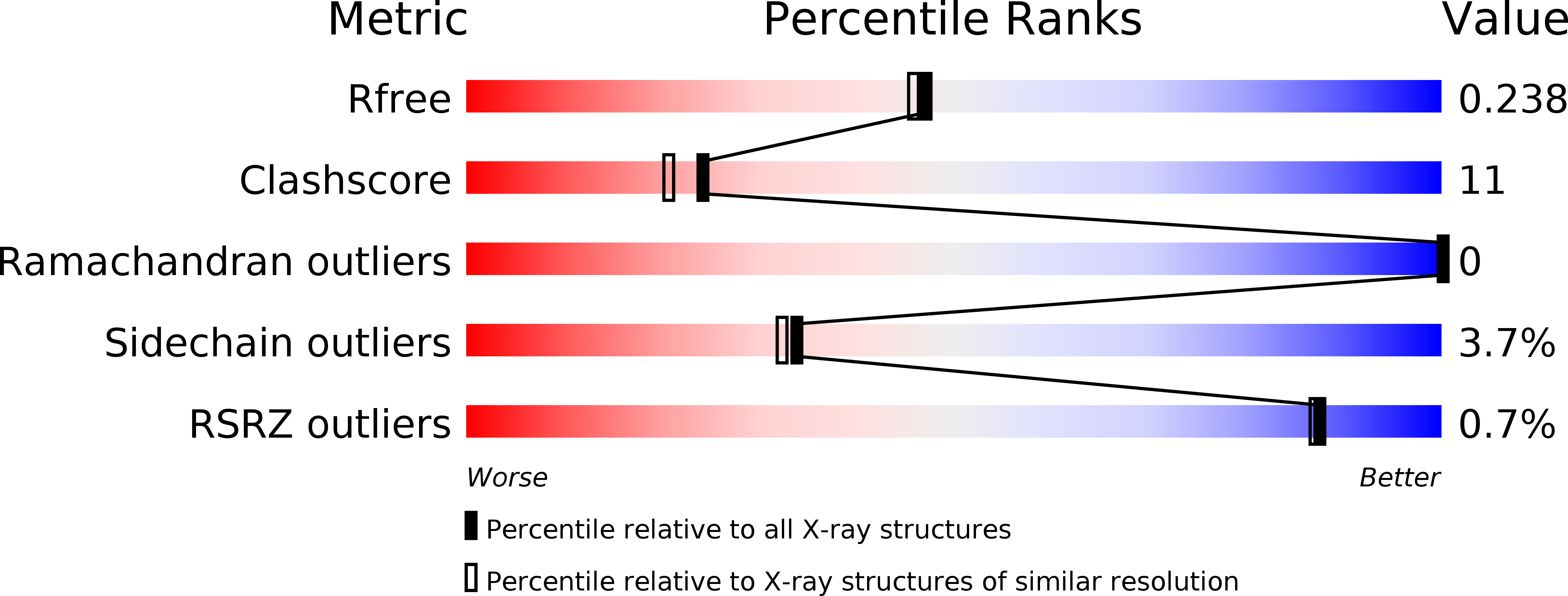
Deposition Date
2006-03-14
Release Date
2007-04-24
Last Version Date
2024-02-14
Entry Detail
PDB ID:
2GCQ
Keywords:
Title:
Fully ligated E.Coli Adenylosuccinate Synthetase with GTP, 2'-deoxy-IMP and Hadacidin
Biological Source:
Source Organism:
Escherichia coli (Taxon ID: 562)
Host Organism:
Method Details:
Experimental Method:
Resolution:
2.00 Å
R-Value Free:
0.25
R-Value Work:
0.22
R-Value Observed:
0.25
Space Group:
P 32 2 1


